Will kale grow in containers? You bet it will!
In fact, this cabbage-family super veggie is one of the easiest of garden greens to grow.
And just a few plants can keep you and your family supplied with a weekly harvest almost year-round!
Being a cool weather and frost-hardy crop, it lasts well into winter. And picking leaves weekly will ensure a steady supply of fresh greens in all but the heat of mid-summer.
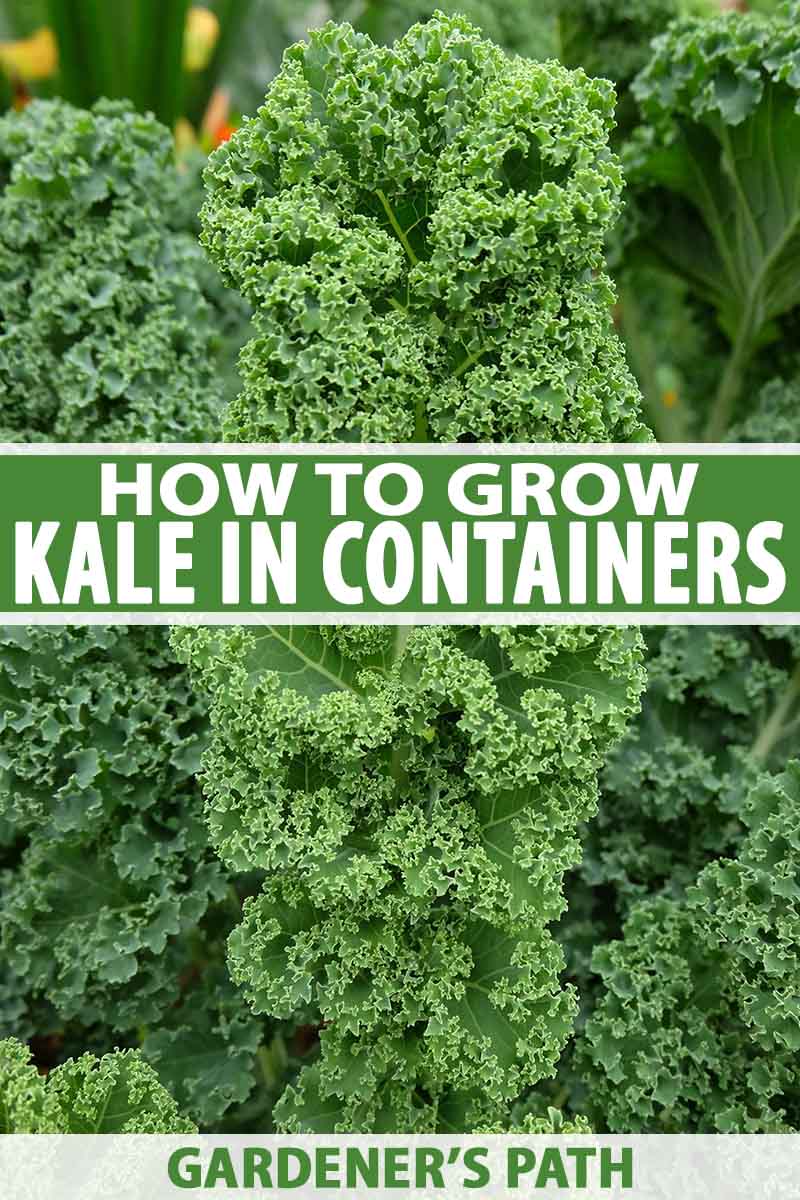
We link to vendors to help you find relevant products. If you buy from one of our links, we may earn a commission.
A light frost even improves the flavor, adding sweet notes to plants that may have become bitter in the summer months.
It’s packed with important nutrients and vitamins and can be enjoyed fresh in salads, lightly cooked as a veggie side dish, incorporated into recipes from breads to soups, blended into smoothies, and frozen or even dried for future use.
For the novice or seasoned gardener, you’ll love how quickly you’ll be successful with this wild cabbage in your container garden – and it’s a hit for children to grow too!

Here’s everything you need to grow and harvest your own kale container garden.
What You’ll Learn
Getting Started
Kale is easily grown in containers from seed, and can be sown in early spring right up until late summer.

To give plants time to mature before summer’s heat sets in, start seeds indoors approximately six weeks prior to the predicted last frost in your region.
In the deep South and regions with mild winters, sow from fall to early spring, in order to avoid the summer heat.
To start seeds indoors:
- Plant to a depth of 1/4-1/2 inch in well-draining, light soil that’s been amended with organic material.
- Water soil until moist but not wet.
- For indoor seedlings, locate trays on a bright windowsill or place under grow lights.
- After 2 weeks, thin the seedlings.
- In 4-6 weeks, after seedlings have true leaves, transplant into containers.
Or, after the danger of frost has passed, direct sow into containers as described above.
Plants sown later in spring and summer will slow their growth during the hottest periods, but resume growing once cooler temperatures return.
Container Care
Container grown plants like kale need a little bit of extra attention than those grown in the ground.

Containers tend to dry out faster in hot weather and moisture levels may need to be checked daily. Water when the top 1-inch of soil is dry to the touch.
Pots and containers may also require more frequent fertilizing. Roots can’t expand beyond container walls to find nutrients in the ground, and regular watering flushes them from the soil.
A half-strength feeding every two weeks is recommended for container plants.
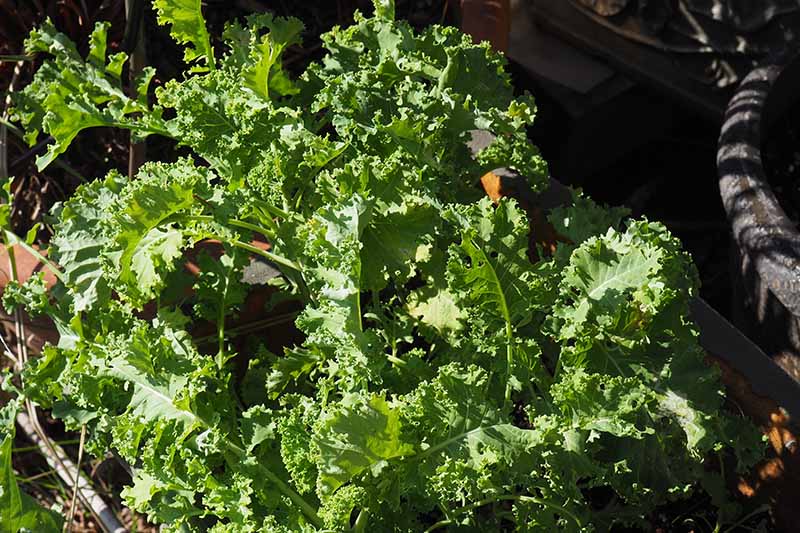
For indoor containers, a south-facing window sill usually provides adequate natural light for healthy growth. However, if your windows don’t let in enough light, you might need to invest in an artificial source such as full spectrum grow lights.
Kale requires 8 hours of light daily, natural or artificial.
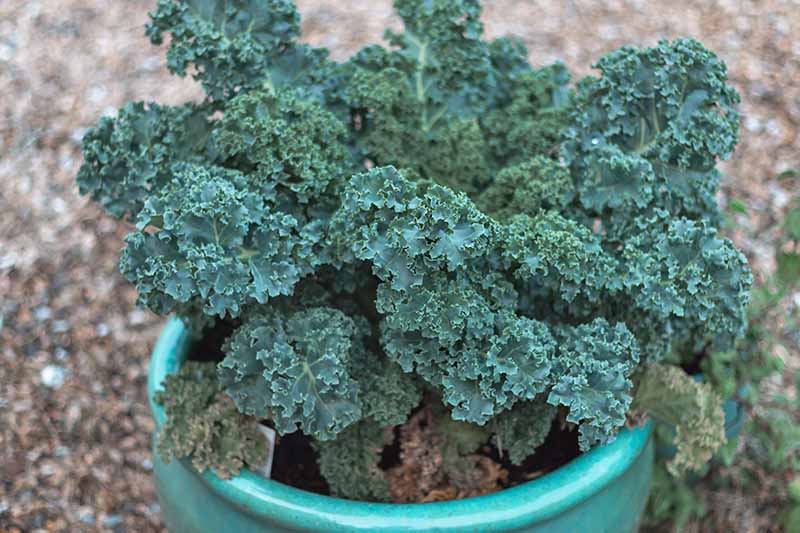
Ideal air temperatures for growth are around 65°F, with night time temperatures of 50°F. A cool basement or garage are suitable sites for growing your crops, provided they’ve got enough light. They can make an attractive addition to balconies, decks, and patios too.
Avoid over- or under- watering indoor plants and ensure they’re generously spaced with adequate air circulation. This will prevent the growth and spread of fungi and mold that can cause problems such as damping off.
Some species of kale can reach a height of 2 to 3 feet – which can be imposing in small spaces. For a more compact form, choose dwarf varieties.
How to Grow
To grow in pots, it’s important to choose containers with ample room – at least 12 inches in diameter and 12 inches deep.
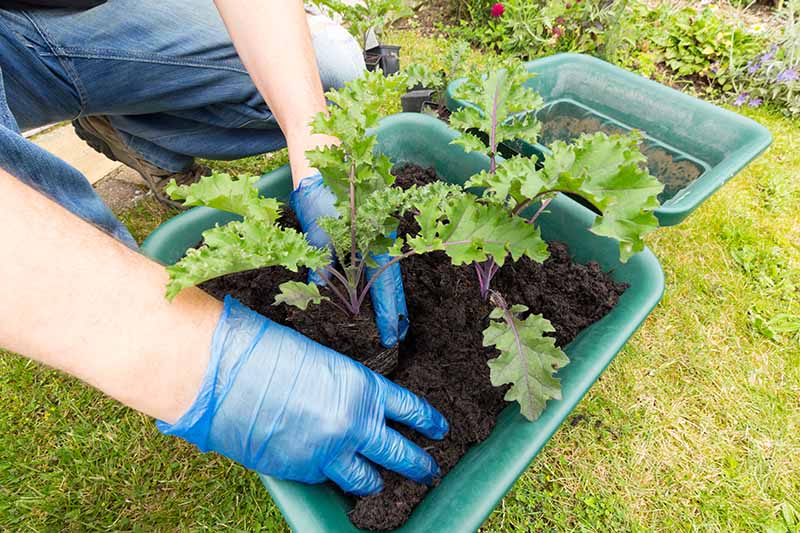
Ensure your containers have adequate drainage material for well-draining soil – root rot from excess standing water is a leading cause of plant failure in pots.
Drainage material can consist of any material that allows water to seep freely out of the pot, it also prevents soil from washing away.
Coconut coir, broken pottery, coffee filters, paper towels, pine cones, mesh window screening, sphagnum moss, and small stones all provide suitable drainage. Place this material at the bottom of the pot before adding the soil.
Kale prefers rich soil liberally amended with organic material, such as well-aged compost or manure. And it prefers a slightly acidic to neutral pH of 6.0 to 7.0.

When planting in containers, space plants a bit closer together than you would in the ground, 4 to 10 inches apart, depending on the type and size at maturity. Check seed packets for more information about the specific varieties that you have selected.
Place your container in a full sun location that gets at least 6 hours of direct sunlight each day.
Mulch around the base of plants with compost, leaf mold, or straw to retain moisture and keep roots cool.

Water as needed to keep the top inch of soil moist, but not waterlogged.
Fertilize containers every 7 to 14 days during the growing season with a tablespoon of NPK 5-10-10 or 10-10-10 water-soluble fertilizer mixed into one gallon of water.
Growing Tips
- In climates with consistently hot temperatures (consistently over 80°F), move pots to a location that gets some afternoon shade until cooler temperatures return.
- When harvesting, pick lower, outer leaves and leave the terminal (center) bud in place to keep plants productive.
- Provide a protective mulch to keep roots cool and moist.
- Vegetables grown in containers dry out much faster than those in the ground and may need to be watered daily in hot, dry conditions.
- Containers also require more frequent fertilizing due to nutrient leeching, and should be fed bi-weekly.
Cultivars to Select
Here’s a selection of popular cultivars – something suitable for every container garden.
Some types of kale can reach a mature height of 2 to 3 with a similar spread. Please remember that the larger they grow, they more they’ll need in terms of light, nutrients, and water – as well as pot size.
For indoor growth or small spaces, choose dwarf varieties, or look for descriptive terms on seed packets – such as compact, high-yield, low-growing, or productive. These indicate plants that will produce plenty of leaves without taking up too much room, and are less likely to become over-sized.
Vates Blue Scotch Curled
‘Blue Scotch Curled’ is an heirloom variety that features attractive, deeply cut leaves with tightly curled edges. This is a robust performer that’s well suited to cooler climates, and is also slow to bolt in summer.
With a rich earthy flavor, it’s excellent as a side dish, in salads, smoothies, soups, and stir-fries.
Vates is a productive dwarf variety with a mature height of 12 to 16 inches, making it well-suited to container growth.
Pick up packages or bulk sizes of this heirloom variety, ‘Blue Curled Scotch’ seeds at True Leaf Market.
Cavolo Nero Black Magic
‘Black Magic’ is a Tuscan cultivar with tremendous narrow and heavily savoyed leaves that start gray, age to green, and mature to a deep, dark forest green that appears almost black. White ribs add to their head-turning appearance.
Bred for winter hardiness, the flavor improves with frost – making it a favorite in the kitchen. Its large leaves make it ideal for making chips, but it’s also excellent for roasting, sauteing, steaming, making stir fry, or adding to soups and stews. Baby greens are suitable for use in salads as well.
A fast growing variety, it reaches a mature height of 24 inches.
‘Black Magic’ seeds are available in packages for home use and in bulk at Eden Brothers.
Red Winter
‘Red Winter’ is a prolific Russian variety with green oak-like leaves and reddish-purple stems that provide a continuous harvest if the central bud is left intact.
Known for its tender, delicious flavor, ‘Red Winter’ can be enjoyed from the microgreen stage through to harvest as mature leaves. This variety is excellent as baby salad greens, sauteed, steamed, stir-fried, and in smoothies.
Plants grow to a height of 22 to 36 inches. Productive and fast growing, it’s perfect for baby greens – but if leaves are allowed to mature it will need a large container.
You can find packages of organic ‘Red Winter’ seeds at Burpee.
Tronchuda Beira
An easily grown Portuguese hybrid with huge, savoy leaves, ‘Tronchuda Beira’ is the most heat resistant of all the coles, and grows vigorously even in hot and humid areas. But it also enjoys cool temperatures, and its flavor is sweetened with a light frost.
The tender leaves have a sweet, mild flavor. It’s actually a hybrid cross between cabbage and Scotch kale. It makes a superb, savory soup and is also well suited to use in baking, sautes, smoothies, and stir-fries.
Plants are low-growing with a height of 12 to 18 inches, making them ideal for pots and small spaces.
Burpee has organic ‘Tronchuda Beira’ seeds and plants available online.
Dwarf Siberian
‘Dwarf Siberian’ is a compact and high yielding variety with slightly crumpled leaves, icy blue green in color. Plants provides an almost constant harvest and fare well in spring after overwintering – producing tender leaves very early in the season.
Sweeter than other varieties, this versatile green adds fresh flavor to chips, salads, smoothies, soups, and stir fries.
Growth is compact, with a mature height of 16 inches – a good choice for containers and the kitchen garden.
You can find ‘Dwarf Siberian’ seeds in a variety of packet sizes at True Leaf Market.
Ornamentals
Many varieties are grown for their prominent interior rosettes in brilliant hues of blue, mauve, pink, red, purple, and white.
Ornamental or flowering kale is edible, but the flavor is usually too bitter to be palatable. Grown primarily for the garden, it’s a late-season standout with colors brightening in cool fall and spring temperatures. See the full guide to growing flowering kale here.
The following cultivars typically grow 12 to 24 inches and are suitable for growing in containers and window boxes:
Song Bird Red
‘Song Bird Red’ has a beautiful fuchsia heart with round, cool-purple outer leaves and creamy, contrasting ribs.
4-inch potted plants are available at Burpee.
Kamome
‘Kamome’ features a fantastic ruffled heart in deep pink, red, or white that’s surrounded by larger leaves of green with white or red ribs, for a wonderful variegated look.
Seeds are available at True Leaf Market.
Managing Pests and Disease
Container-grown kale can be susceptible to aphids and spider mites, which can be controlled with a strong blast of water from the hose.
Check regularly, and respray as needed. Or, treat with an insecticidal spray that’s safe for use on vegetables.
Espoma Organic Insect Soap, available from Burpee, is an effective deterrent that can be applied right up until harvest day.
Crawlers, like caterpillars and the harlequin cabbage bug (a pest of all brassicas) can be hand picked from the plant and dropped in soapy water to dispatch them.
Slugs and snails can also be handpicked. Or, place a layer of diatomaceous earth around containers to prevent slugs from accessing your plants. Read about other natural methods to control slugs and snails right here.
For cabbage moths and worms, an application of Bacillus thuringiensis may be needed. A soil-dwelling bacterium, it’s safe to use in organic gardens. Read more about how to control insects with Bt here.
Harvesting
For the most part, harvesting kale grown in containers replicates what you would do if you were growing it in the vegetable patch. Take a more in-depth look here.
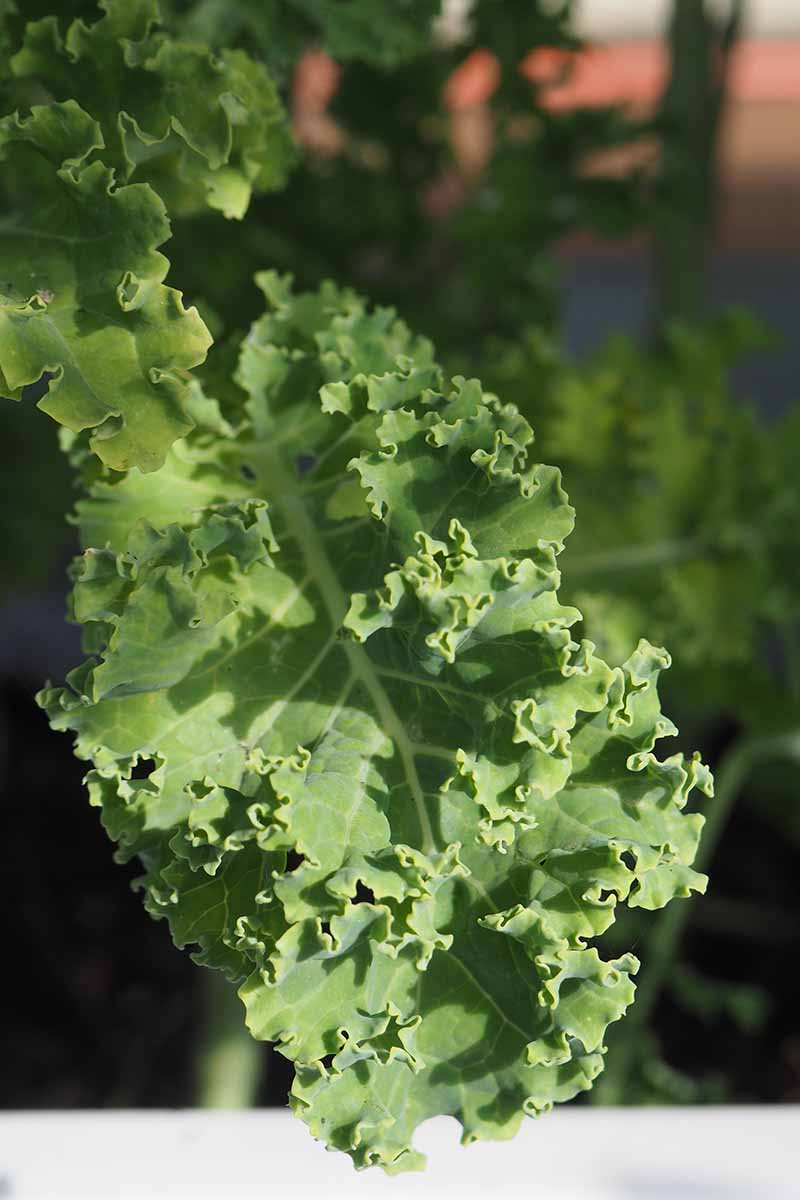
After seedlings are established in their containers with four sets of true leaves, you can harvest at any time for baby greens. Allow a longer growing time for larger, mature leaves.
When picking, the texture of leaves, ribs, and stems should be crisp and firm.
Pick lower leaves first and work up the stem. Always leave the terminal bud – located in the center of plants – and a few upper leaves in place for continuous production.
Any leaves that are blemished, brown, wilted, yellowing, or show signs of insect damage should be discarded or placed on the compost pile.
All Hail Kale
Now that you’re savvy about growing kale in containers, will you be planting some of this super veggie yourself?
You don’t need a lot of space to enjoy a bountiful harvest!
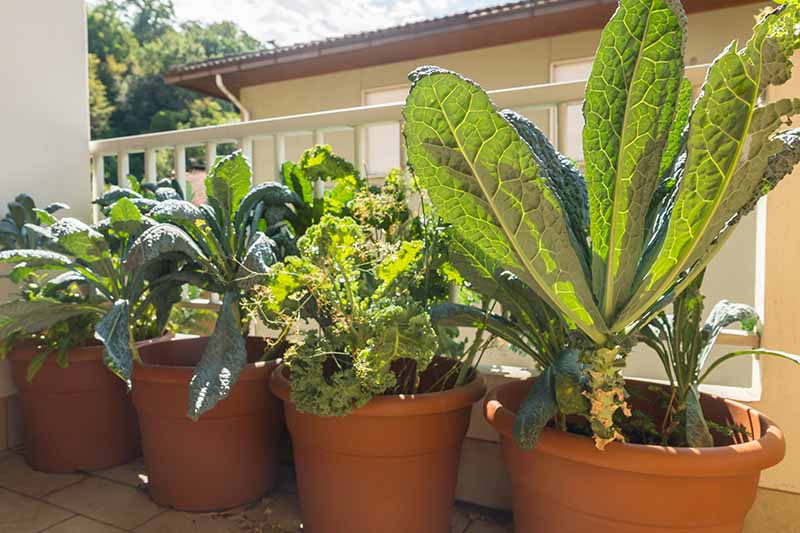
So, this year, plant up a pot or two. You can enjoy the beauty and nutrition of this versatile cabbage anywhere – and you’ll love what a robust performer it is.
Do you have questions about growing this cool-weather veggie in your small space? Drop us a line in the comments below.
And if you enjoyed reading about growing kale in containers, be sure to check out our other kale growing and care guides. Here are a few suggestions:
- How to Naturally Kill Insects on Kale
- How to Grow Sweet and Tender Red Russian Kale
- Harvest Hearty Greens from the Garden: How to Grow Kale
Photos by Lorna Kring © Ask the Experts, LLC. ALL RIGHTS RESERVED. See our TOS for more details. Product photos via Burpee, Eden Brothers, and True Leaf Market. Uncredited photos: Shutterstock. Additional writing and editing by Clare Groom and Allison Sidhu.
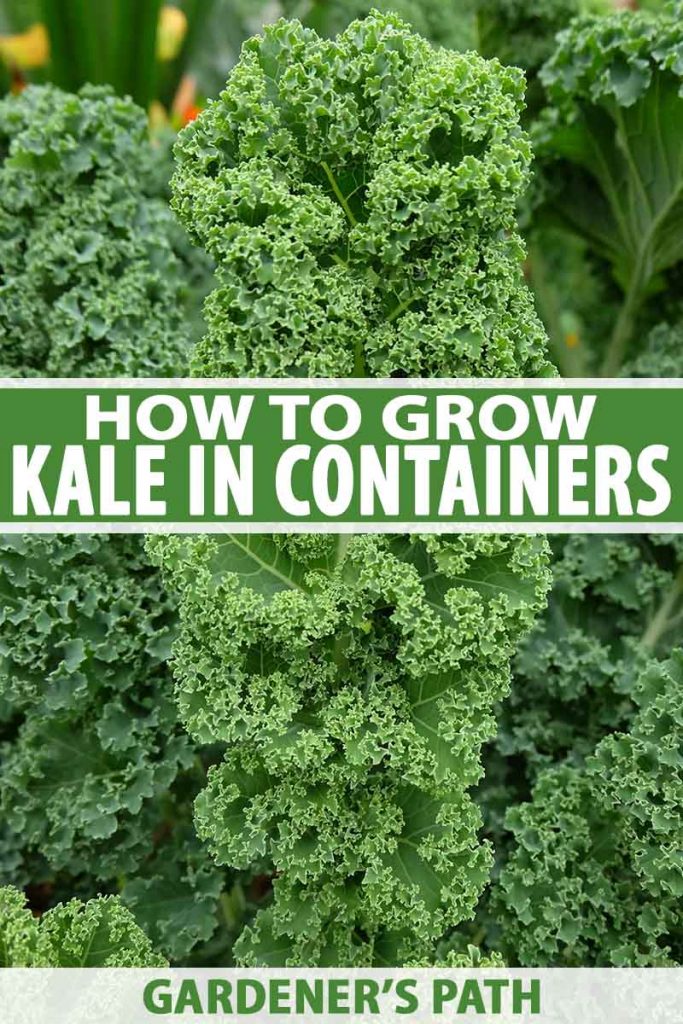
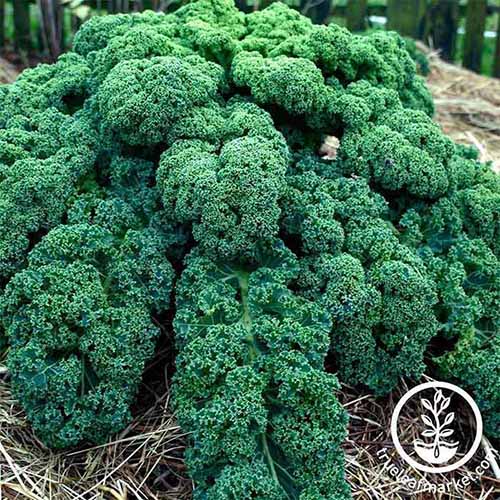
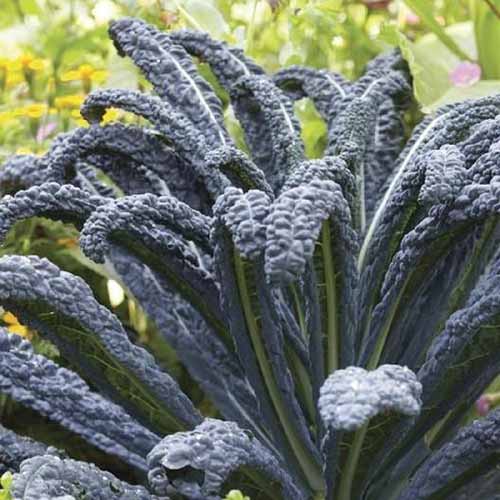
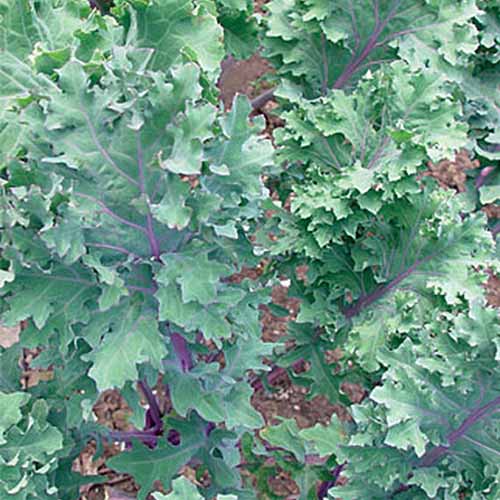

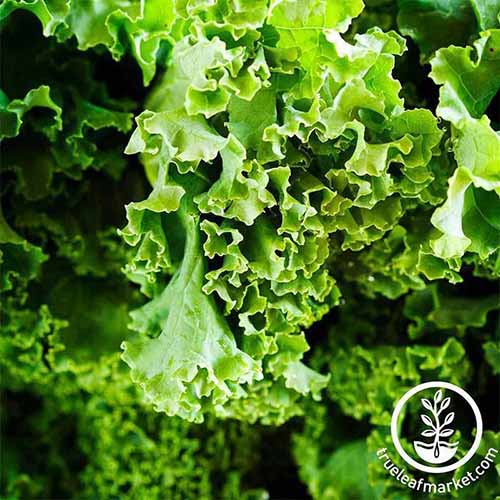
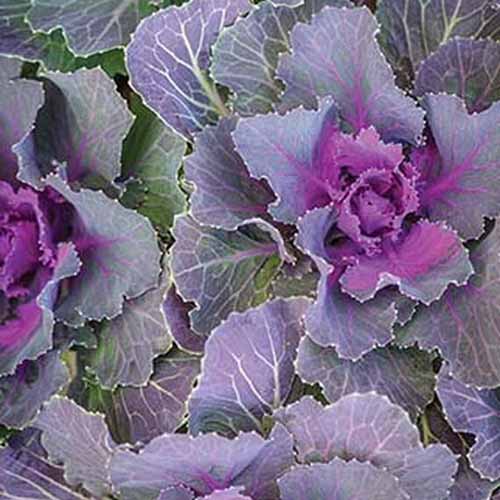
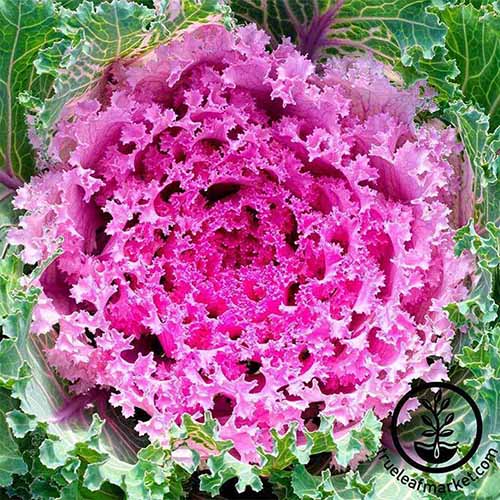
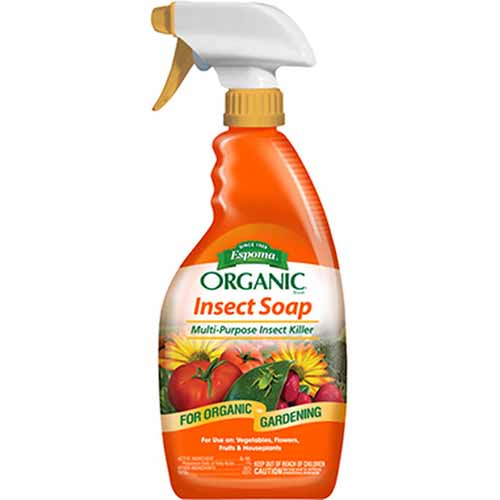
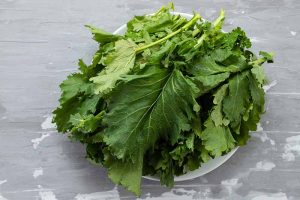

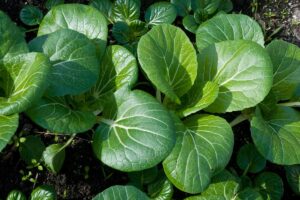
Great information. This is my first time planting kale. Do I put one seedling in a 16 inch pot?
Hey Fazia, it depends on how you want to grow it.
For full-sized plants with large, mature leaves, I suggest one or two seedlings in a 16 inch pot.
But, if you want to harvest small leaves for salads, smoothies, etc., you can plant seedlings much closer.
There’s 10 of the Lacinato variety in this 16 inch pot, but the leaves are harvested every few days, so the plants stay relatively small. I may transplant a few out later if it gets too crowded for them.
Hope that helps, and enjoy your first harvest!
I leave in Nigeria. I actually want to cultivate this vegetable. Could you give me some help on how I can do that taking into consideration the tropical nature of my climate.
Hi John, yes, this veggie can be reliably cultivated in tropical regions and the best time for cultivation is in the cool, dry season of November to March – it won’t fare well when the humidity is high. Provide afternoon shade to protect from high daytime temperatures and keep the soil moist but not wet. Excessive heat can cause kale to become bitter and tough. The solution is small crops of successive plantings – sow a row or container every two weeks for a steady supply of tender, leafy greens. Hope that helps, and let us know how you make… Read more »
The article says, “it prefers neutral to slightly alkaline soil with a pH of 6.0-7.0″ but under 7 is acidic, not alkaline. Do you mean it prefers slightly acidic soil or should the pH range be modified to 7.0-8.0? My wife has never been able to grow kale since we moved to zone 9 because something always eats the seedlings. I’m going to give it a go and I don’t want to make a simple mistake like messing up the dirt.
You’re absolutely right zim, that should read a slightly acidic to neutral pH of 6.0 to 7.0.
Good eye, thanks for the catch – we’ll get that corrected!
If you’re having problems with something eating your plants, watch for the white cabbage moth… they love kale and can quickly decimate a potful!